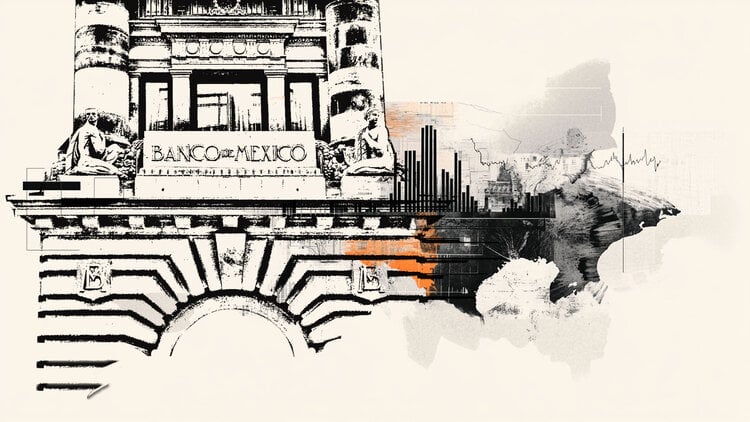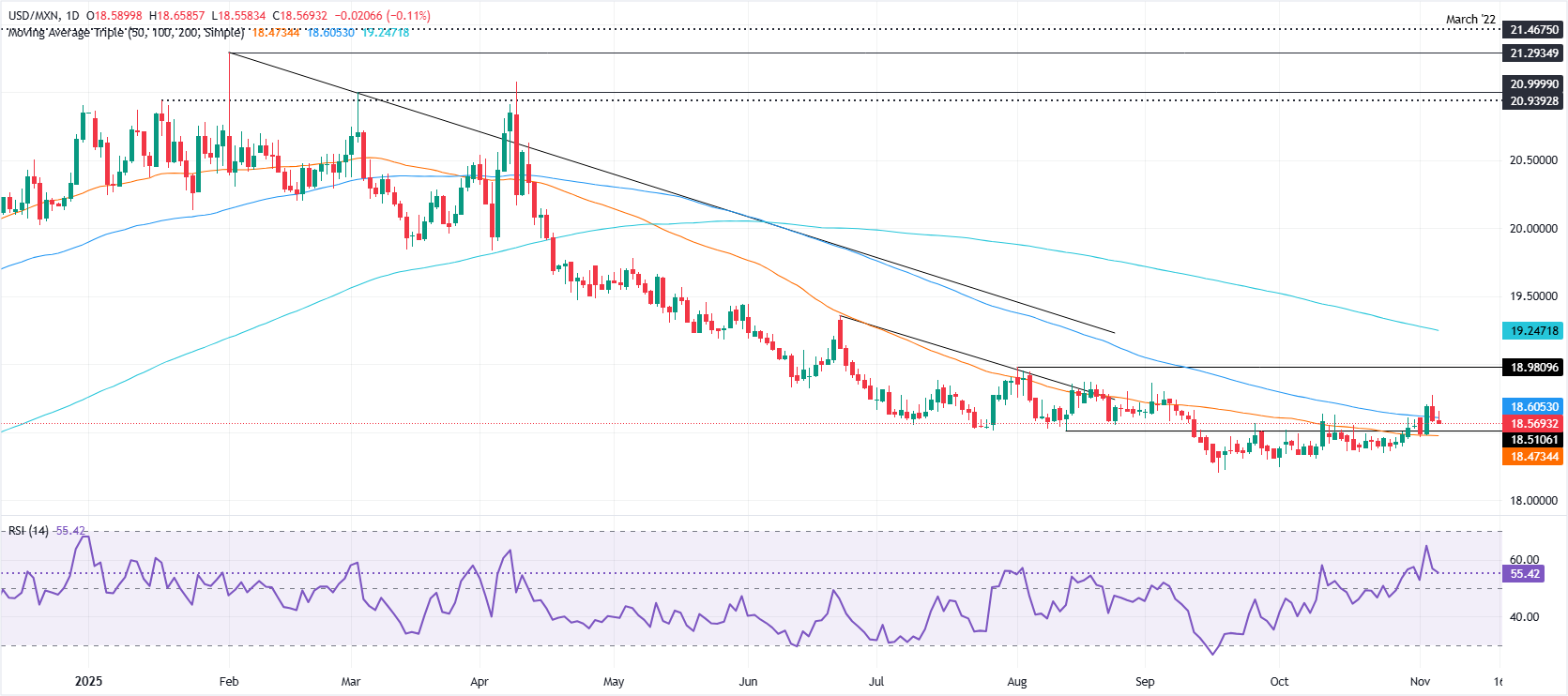
Banco de Mexico (Banxico) decided to cut interest rates by 25 basis points to 7.25%, in a 4-1 vote split, with Deputy Governor Jonathan Heath voting to keep rates unchanged at 7.50%.
Mexico’s central bank delivers a 25 bps cut in a 4–1 split, cautious tone hints at slower policy easing ahead
On its monetary policy statement, the Governing Board deemed it appropriate to continue the rate-cutting cycle, making the decision based on its assessment of the current inflationary outlook.
Regarding the path of interest rates, “the Board will evaluate reducing the reference rate,” removing from the statement that “the Board will assess further adjustments to the reference rate.” This indicates that policymakers could pause the easing cycle amid growing concerns about stubborn inflation.
Banxico also updated its economic projections, which show headline inflation converging to the bank’s 3% goal by Q3 2026.
USD/MXN Price Chart – Daily

On the decision, USD/MXN fell from around 18.59 to 18.57, but it remains shy of testing the daily low of 18.55. A breach of the latter could expose the confluence of the 20 and 50-day Simple Moving Averages (SMAs) at around 18.46/48, before testing the yearly low of 18.19. On further weakness, the 18.00 milestone lies ahead.
On the upside, if USD/MXN climbs above 18.60, the next resistance would be the September 2 high at 18.86, ahead of the 19.00 figure.
Banxico FAQs
The Bank of Mexico, also known as Banxico, is the country’s central bank. Its mission is to preserve the value of Mexico’s currency, the Mexican Peso (MXN), and to set the monetary policy. To this end, its main objective is to maintain low and stable inflation within target levels – at or close to its target of 3%, the midpoint in a tolerance band of between 2% and 4%.
The main tool of the Banxico to guide monetary policy is by setting interest rates. When inflation is above target, the bank will attempt to tame it by raising rates, making it more expensive for households and businesses to borrow money and thus cooling the economy. Higher interest rates are generally positive for the Mexican Peso (MXN) as they lead to higher yields, making the country a more attractive place for investors. On the contrary, lower interest rates tend to weaken MXN. The rate differential with the USD, or how the Banxico is expected to set interest rates compared with the US Federal Reserve (Fed), is a key factor.
Banxico meets eight times a year, and its monetary policy is greatly influenced by decisions of the US Federal Reserve (Fed). Therefore, the central bank’s decision-making committee usually gathers a week after the Fed. In doing so, Banxico reacts and sometimes anticipates monetary policy measures set by the Federal Reserve. For example, after the Covid-19 pandemic, before the Fed raised rates, Banxico did it first in an attempt to diminish the chances of a substantial depreciation of the Mexican Peso (MXN) and to prevent capital outflows that could destabilize the country.








